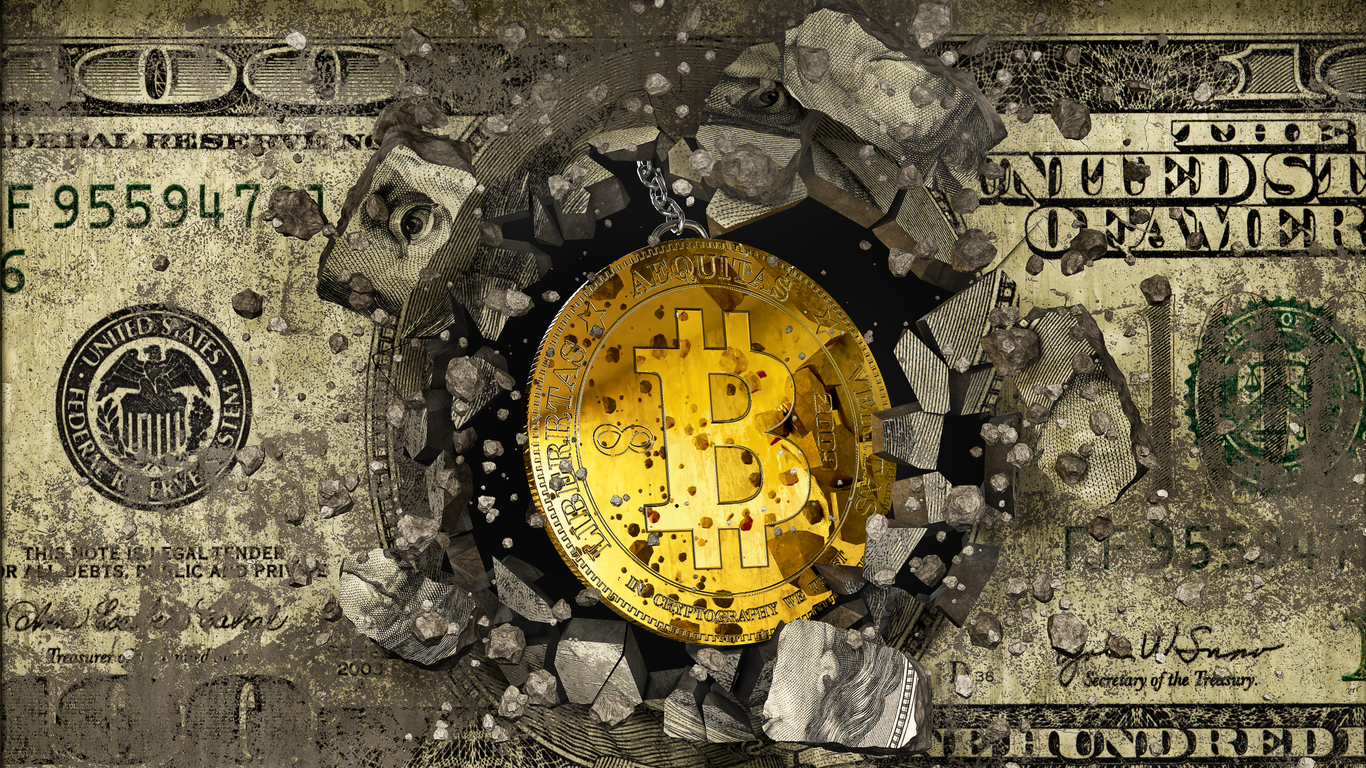With the advent of cyber currency, first with bitcoin then followed by a host of others, it was only a matter of time until Uncle Sam threw its hat into the cyber coin ring.
I have covered cyber coin before, but with Bitcoin’s recent new highs, it’s worth taking yet another look at the phenomenon.
Crypto currency comes in many forms. Bitcoin being the most notable, but there are many others that go by names like Ethereum, Ripple, Stellar Loomis, EOS and Lightcoin, to name but a few. With currently over 10,000 cyber currencies, it certainly seems like everyone is issuing their version of internet cash.
The idea behind crypto is it is anywhere and everywhere there is internet access. Not controlled by any one government, crypto is “mined” by using mathematical formulas called block chain technology. Wikipedia describes it as: “A cryptocurrency is a digital asset designed to work as a medium of exchange that uses strong cryptography to secure financial transactions, control the creation of additional units, and verify the transfer of assets”.
As a currency, its qualification meets some of the characteristics a medium of exchange must possess. A currency must be hard to replicate, be divisible, recognizable, have uniformity, be portable, have acceptability and maintain a store of value. On the first six characteristics, crypto could be argued fits the bill nicely. My objection is having issue with the last characteristic, maintaining a store of value.
It goes without saying that at times, the price of crypto currencies can vary tremendously. Stories of skyrocketing prices and subsequent roller coaster like plunges are common. Although a rising price may convince some investors (and I use that word loosely) to believe crypto might make a great speculation play, the very fact it rock and rolls so violently violates the store of value characteristic a medium of exchange must have to qualify as a currency.
Store of value means both the buyer and seller of the currency must have faith in its stability. Stability meaning it doesn’t go up or down much. Certainly the buyer of crypto relishes the meteoric rise when it occurs, but like all things money, there is always someone else on the other side of the trade.
If a buyer of crypto makes an overnight fortune on a price spike, the seller of that very same crypto lost an equal amount in value.
For to buy crypto, one must have exchanged something else for it. Usually it’s another currency that is exchanged and the person who sold the crypto now holds a currency that has fallen in value by an equal amount.
Stability, the very definition of maintaining a store of value, is almost nonexistent at this time in the cyber coin market.
Another attraction of crypto to some is the fact no one or no one government can shut it down. Again from Wikepedia: “It is a decentralized digital currency without a central bank or single administrator that can be sent from user to user on the peer-to-peer bitcoin network without the need for intermediaries”.
Since the internet is worldwide and basically unstoppable, the thinking goes that crypto coins can’t be confiscated by meddling governments.
However, if desired, central governments can and have shut down crypto exchanges.
This means if your country of residence decides it doesn’t want you trading crypto, it can shut down all the ways you can trade it by shutting the exchange websites. Internet workarounds are certainly possible, but to the average Joe, those backdoors may be difficult to access.
Governments maintain strict control over their respective currencies. They are the lifeblood of an economy and also the check book of governments.
History has proven time and time again a government will insure its currency is valid and not usurped by another if it deems it necessary in order to have the ability to print that currency and freely spend it to fund its operations.
That said, to think central governments aren’t fully aware of the threat crypto coins may present to their specific currencies would to be more than naïve.
Case in point, the U.S. government is looking into issuing its own version of cyber coin called the Central Bank Digital Currency (CBDC).
The U.S. is not alone. The issue is being discussed among central banks worldwide.
That said, in this analysts opinion, it’s only a matter of time before governments bring down a harder hammer on the entire cyber coin phenomenon.
(As mentioned please use the below disclaimer exactly) THANKS (Regulations)
This article expresses the opinion of Marc Cuniberti and is not meant as investment advice, or a recommendation to buy or sell any securities, nor represents the opinion of any bank, investment firm or RIA, nor this media outlet, its staff, members or underwriters. Mr. Cuniberti holds a B.A. in Economics with honors, 1979, and California Insurance License #0L34249 His insurance agency is BAP INC. insurance services. Email: [email protected]


